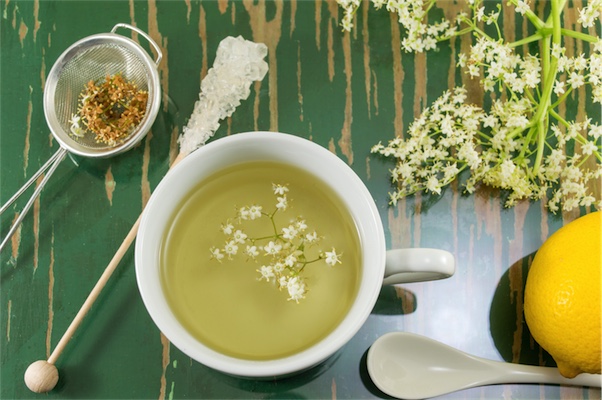Natural ways to support mild to moderate fevers
** Caveat: This article discusses the management of uncomplicated, mild to moderate, self-limiting fever in otherwise healthy adults. Prolonged fevers and those associated with convulsions, rashes or neck pain need immediate medical attention.
Can a fever be good for you?
A headache, flushed cheeks, chills, lethargy, exhaustion, muscle aches – these fever symptoms are the first signal your immune system is preparing to do battle.
Fever is no fun. The initial reaction of wanting it gone is understandable. So a reasonable response would be to take antipyretic medication such as aspirin or paracetamol to suppress it? Perhaps not?
If you’re willing to cop a little short-term pain for long-term gain, embracing your fever could see you recovering faster and gaining a stronger immune system.
What is a fever?
Fever is a rise of the normal core body temperature in response to a virus or bacteria. The chemicals produced by these pathogens trigger your brain to turn up the dial on your internal thermostat.
An increased temperature creates an inhospitable environment for viruses and bacteria to replicate. Fewer pathogens mean a faster and more effective immune response. So it makes sense not to suppress these kinds of fevers and co-operate with your immune system.
Measuring body temperature
Healthy adult body temperature ranges between 36.8-37.7 degrees Celsius. These ranges vary depending on the measuring location. Common sites for measurement are oral (under the tongue), rectal (bottom), tympanic (eardrum), and axillary (armpit). The chart below gives a guideline. Feeling your forehead with your hand is not an accurate guide. Oral temperature is a practical measure for adults. You’ll need a digital thermometer to two decimal places. These are inexpensive and available from most chemists. Take readings 15-20 minutes away from consuming food and beverages for an accurate measurement.
| Location | Normal Range |
Fever **if otherwise healthy |
Medical attention |
| Oral | 36.8 – 37.7 | 37.8-38.3 | 38.4 |
| Rectal | 37.3-37.8 | 37.9-38.9 | 39 |
| Tympanic | 37.3-37.8 | 37.9-38.9 | 39 |
| Axillary | 36.4 – 36.7 | 36.8 | 37.8 |
* All measurements are in degrees Celsius
Fever Phases
To manage fever you’ll need to understand what’s going on.
Part 1 – The Chill Phase
The internal thermostat rises. Your current body temperature is now below the thermostat so you will feel cold until your body can raise it to match the new set point. This is an uncomfortable phase with shivering, chills, increased pulse
General management:
- Bed rest and keep warm (without overheating yourself)
- Maintain adequate hydration
- Appetite reduces during this phase. This helps to raise body temperature by reducing blood flow to your digestive tract.
- Grab your thermometer and check your temperature every 30 – 60 minutes or so and write it down to monitor the fever.
Herbs to support the Chill Phase of fever
Herbs help support a fever and assist the body in raising the temperature. Take them
- Ginger, cinnamon, garlic
and cayenne are warming and support the body to raise the temperature. Garlic is also antimicrobial so will have extra benefits to helping overcome pathogens. - Elderflower used as a tea drunk as hot as you can tolerate it will also support a rise in temperature.
- Infuse herbs for 10-15 minutes.
Part 2 -The Sweat Phase
As the body temperature rises and peaks, the immune system
During the sweating phase, use tepid baths or cool face cloths to help to cool.
Maintain adequate hydration.
Herbs to support the sweat phase of fever
- Herbs that promote sweating (diaphoretics) such as Ginger, Lime Flowers, Yarrow, Elderflower
- Herbs that draw blood to the surface of the skin to aid cooling (Peripheral vasodilators) Yarrow
- Cooling herbs (Refrigerants and antipyretics) Peppermint, Dandelion Root, Andrographis and Gentian
- Infusions consumed in the sweating phase should be warm rather than hot to avoid overheating and stimulating.
The combination of yarrow, elderflower and peppermint are available at health food stores as YEP tea. This tea works for both stages of a fever (consume at different temperatures) and is useful to have in the pantry.
Recovery Phase of fever
You’ll usually feel pretty wrung out after a fever, so it’s important to recover well. Getting back into normal daily activities too soon can cause a relapse or leave you vulnerable to more infections.
- Rest and avoid any strenuous activity. Sleep is your number one priority.
- Eat healthy, nourishing and easy to digest foods. Chicken soup or vegetable broths are ideal and will help you stay hydrated.
- Support your immune recovery with Echinacea, Vitamin C
and Zinc
A fever flexes the muscles of your immune system, making them stronger and more efficient at keeping you healthy. The next time you feel like you’re coming down with something take the opportunity to make fever your friend. Your immune system will thank you for it.

Need help with building a robust immune system?
Norelle Hentschel is an experienced Naturopath with a clinic in Stones Corner, Brisbane who enjoys supporting her clients to reach their health goals.
Want more articles like this?
Receive a monthly digest of natural health information to help you become “health” sufficient!
PS. Your inbox real estate is precious, and we will never annoy you with sales pitches or share your details with anyone else. One email a month — that’s it.


